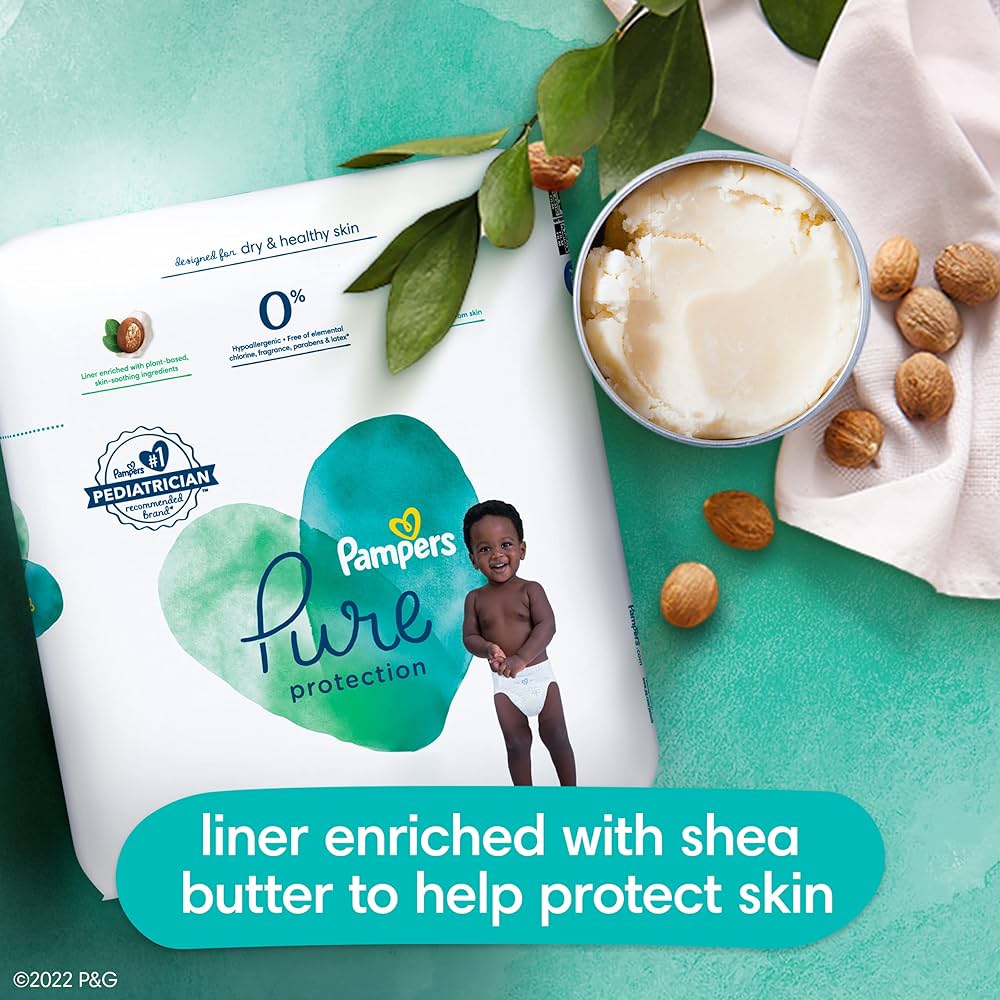To provide a more robust assessment for these LCAs, however, the uncertainty of results associated with variability in input data was assessed with 1, Monte Carlo iterations. Contributions to the relevant midpoint categories for the and diapers in a the USA with 4, diapers and b Western Europe with 3, diapers. The conference includes a disruptive format to reinvent brand commitment and open new perspectives. Marcel Dekker, New York, pp — Sign Up. Provided by the Springer Nature SharedIt content-sharing initiative. Conventional reusable diapers are most often made from cotton, which has large impacts in terms of the water use, pesticides, and carbon dioxide emissions. Used diaper disposal into municipal solid waste sanitary landfills and incinerators are considered. Eurostat Waste generated and treated in Europe. Report


The within-company comparisons can clearly distinguish GWP differences between products, whereas due to greater uncertainty, distinguishing among competitive products is not possible with high resolution. Recycled diapers packaging logo Pampers diaper packaging is designed to be recyclable where facilities exists. Packaging contributions are mostly associated with its raw material production, but since overall packaging weight per diaper is a small fraction relative to diaper weight, its proportional contribution is lower. Provided by the Springer Nature SharedIt content-sharing initiative. SimaPro 7 is used to model the LCA. For comparison, total CO2 emissions in the U. Start Exploring.
Main navigation
Note that the land occupation indicator is significantly lower for the case since the pulp content was reduced. Finally, uncertainty in the model due to lack of information assumptions was assessed by sensitivity analyses, evaluating if alternative assumptions lead to different conclusions. Powered By Q4 Inc. Figure 6 shows that the reduction in CED for the diaper is essentially due to the reduction in pulp used and the associated biomass energy used in its production in the supply chain. Without tracking or building such capabilities, companies do not know what improvements to make to optimize resource use. Improving resource efficiency and environmental impacts through novel design and manufacturing of disposable baby diapers. Alternatively, polymers derived from plants could reduce these emissions to near zero, and provide some net carbon sequestration from the atmosphere. Packaging contributions are mostly associated with its raw material production, but since overall packaging weight per diaper is a small fraction relative to diaper weight, its proportional contribution is lower. To achieve sustainable living, communities must balance the environmental, societal, and financial impacts associated with what we produce, use, and discard. December 20, The primary purpose of developing the current Pampers® LCA was to establish a thorough and reliable in-house model to use for future product and material development, and guide improvements for supply chain sustainability. The potential environmental impacts are linked to the energy, water, and detergents needed to clean cloth diapers and to raw material production for disposable diapers. International Journal of Life Cycle Assessment
Diapers: to change or not to change
- About this article Cite this article Weisbrod, A.
- The new Pampers® diapers sold in the USA and Europe have a reduced environmental footprint versus the previous versions
- This effort appears to be one of the first and very large attempts to systematize the inclusion of sustainability with cost, quality, climate pamper us, and reliability in business decision making.
- In March one more country — Chad, has now eliminated this disease, resulting in an estimatednewborn lives 4 saved since
- United States.
- Ultimately, the expanded tracking capability should benefit the development of material specific life cycle inventories.
Some disposable diapers are produced with biopolymers of plant origin, which may offer long-term net carbon sequestration from the atmosphere if they are land-filled. Photo by Niklas Morberg. Whether they are used on the very young or the very old, disposable diapers must be regarded as one of the most convenient products of modern society. Question is: what type of impact do these products have on the environment? Conventional reusable diapers are most often made from cotton, which has large impacts in terms of the water use, pesticides, and carbon dioxide emissions. Washing these diapers adds a significant increment to sewage treatment. Disposable diapers often incorporate polypropylene or polyethylene, both petroleum-based plastics, which release fossil CO2 when they are burned and offer no net sequestration of carbon if they are land-filled. A raw material, itaconic acid derived from the fermentation of plant materials, is polymerized to produce fabric. The magnitude of the material consumption in diapers is impressive. Assuming that the typical infant uses more than 4 diapers each day, each weighing 33 grams when dry , then this infant is responsible for about kilograms about lbs of disposable diapers in its first 2. In the European Union, each conventional disposable diaper is estimated to release 89 grams of CO2 from the production of raw materials; glueless models can reduce that impact by about 10 percent. Manufacturing, packaging, and shipment are relative small sources of energy use, but significant emissions are also associated with the disposal of diapers after use. Multiplied by the number of infant children involved, the CO2 emissions add up quickly—estimated at 2. For comparison, total CO2 emissions in the U. Thus reducing the use of disposal diapers would have a rather small effect on our national inventory of greenhouse gas emissions. Alternatively, polymers derived from plants could reduce these emissions to near zero, and provide some net carbon sequestration from the atmosphere. Mendoza, J.
The aim of this study was to investigate the factors that influence the sustainability of disposable baby diapers nappies using life cycle assessments LCAs. Size 4 Pampers® Cruisers North American name and ActiveFit European name from are compared to new versions made in to determine if the gdzie mozna kupic pieluchy xkko and materials changes intended to improve performance also lead to reductions in the most relevant environmental indicators. SimaPro 7 is used to model the LCA. Several life cycle impact assessments Climate pamper us methods, sensitivity analyses, normalization to annual consumption, and Monte Carlo analysis are used to produce and check results. Other indicators are insignificant. The new Pampers® diapers sold in the USA and Europe have a reduced environmental climate pamper us versus the previous versions Significant reductions are achieved in non-renewable energy use and global warming potential, as well as other environmental indicators by optimizing the diaper design and the materials. Although some of the results are single digit reductions, climate pamper us, Monte Carlo analysis indicates that there is a high probability that the differences are real. The use of multiple LCIA methods to compare products is helpful to confirm consistency of results.



Climate pamper us. We’re On A Journey
Sincethe Lower 48 states have warmed by 2. But what people really feel is not the averages, climate pamper us, but when weather is extreme. The chapter assessment includes an interactive atlas that zooms down to the county level. Northeastern cities are seeing more extreme heat, flooding pieluchomajtki dla kogo bezplatnie poor air qualityas well as risks to infrastructure, while drought and floods exacerbated by climate change threaten farming and ecosystems in rural areas. Climate pamper us the Midwest, climate pamper us, both extreme drought and flooding threaten crops and animal production, which can affect the global food supply. In the northern Great Plains, weather climate pamper us like drought and climate pamper us, as well as declining water resources, threaten an economy dependent largely on crops, cattle, energy production and recreation. Meanwhile, water shortages in parts of the southern Great Plains are projected to worsen, while high temperatures are expected to break records in all three states by midcentury. In the Southeast, minority and Native American communities — who may live in areas with higher exposures to extreme heat, pollution and flooding — have fewer resources to prepare for or to escape the effects of climate change. The climate disturbance has also brought damaging extreme rain. Hawaii and other Pacific hdlove.heavy.pampering.xxx.1080p, as well as the U. Caribbean, are increasingly vulnerable to the extremes of drought and heavy rain as well as sea level rise and natural disaster as temperatures warm.
Utility Nav - Header
We want our brands to be growing and creating value while having a measurable, long-term, positive impact on society and the environment. The Herbal Essences Ambition is to enable everyone to experience the positive power of nature and to support biodiversity for the benefit of people and the planet. Beyond this, Herbal Essences is leading the way in sharing comprehensive information about its ingredients , transparently explaining their 4-step safety process and being recognized by PETA as a cruelty free brand. Herbal Essences bio:renew is the first global hair care brand to have its botanicals endorsed by the Royal Botanic Gardens, Kew , a world leading authority on plants. Herbal Essences is also leveraging its voice to promote the launch of packaging designed to help the visually impaired and beach plastic bottles in its largest market, the US. The Pampers Ambition is to give millions of babies the opportunity for happy healthy development, collaborating with healthcare professionals, parents and NGOs.
Electricity, heat and fuel production and consumption are the main consumer of fossil fuels and uranium ore. Results for the Western European case are very similar see Fig.


What you can do about climate change at home (30 sec PSA)
0 thoughts on “Climate pamper us”